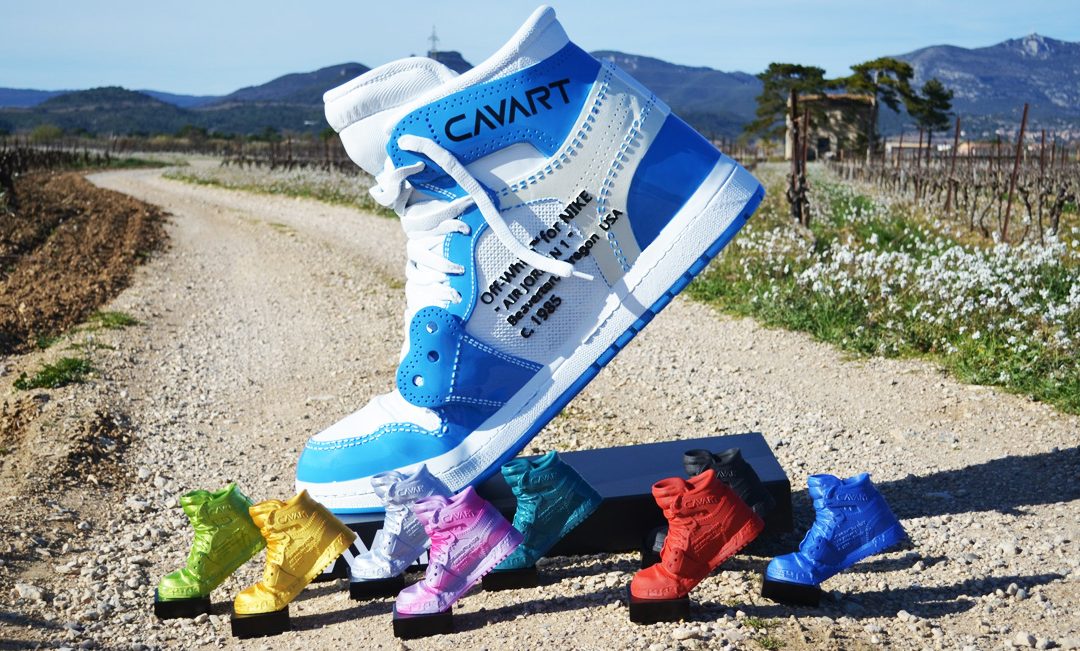
Mar 8, 2024
CAVART, whose name is Julian Cavaillé, is a contemporary French sculptor born in 1995 in Nîmes. Initially, he moved towards a sporting career in a training center, but an injury forced him to reconvert.
The artist opened up to other cultures, he traveled the world and settled for a year in Australia then in the United States, before returning to his native region to live from his original passion in supporting athletes. by opening its own structure.
However, CAVART has a creative spirit, he sold his company to open a 3D creation service for artists, the world of fashion and entertainment. Thanks to his know-how, he has become a reference in the field, working for internationally recognized artists and landing contracts with licenses such as Disney.
It was then that CAVART, encouraged by those close to him and by the desire to mark his era, decided to concentrate on his own creations, inspired by a sketchbook from his childhood filled with drawings of sneakers, cars, universes. mangas and ghosts: so many references which marked his youth.
The Artist’s guiding principle is to see things “BIG”, a direct legacy of his experiences abroad in cultures known for their excess and of his competitive spirit always in search of new performances. Concerned about his environment, he promotes the use of eco-responsible materials and local production in his workshop near Montpellier.
2023 marks his entry into the spotlight in the art world, his first work “Le Grand Soulier”, a 115 cm high Sneaker, immediately aroused enthusiasm. It will be exhibited in the famous Carrousel du Louvre at the opening of the Paris contemporary art fair (Art Shopping). A large number of collaborations with key players in art are planned this year.
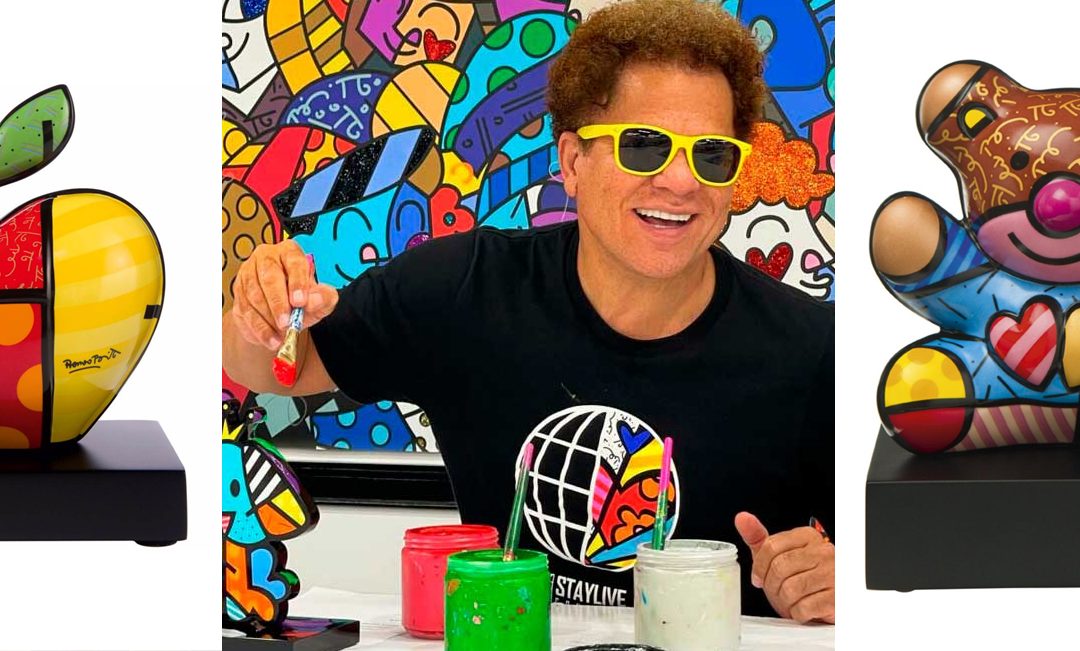
Dec 27, 2023
Romero Britto, founder of the Happy Art Movement, is an internationally renowned artist who has created an iconic visual language of happiness, fun, love, and hope all its own inspiring millions worldwide.
Brazilian-born and Miami-made, Romero has made it to the top and is considered one of the most famous and celebrated living visual artists in the globe. Britto’s appreciation of the masters Pablo Picasso, Henry Matisse, Andy Warhol, Keith Haring, and Roy Lichtenstein influenced him to create a completely new artistic style by using vibrant, bold, and colorful patterns to reflect his optimistic view of the world around him.
His work has been exhibited in the most prestigious galleries and museums in over 120 countries, including the Carrousel Du Louvre and he was the first living visual artist to present his work at the Soumaya Museum. Romero Britto has also created innumerous public and private art installations, not to mention the largest in the history of London’s Hyde Park. He did the opening of the Super Bowl XLI in collaboration with the Cirque Du Soleil, was the official artist for the 2010 FIFA World Cup South Africa, ambassador to the 2014 FIFA World Cup Brazil, honorary torch bearer and ambassador for the Rio 2016 Olympic Games.
Britto, considered the most licensed artist in history, is a frequent speaker at the World Economic Forum (Davos, Switzerland) and is an activist for more than 250 charitable organizations, but most of all, he is an artist who believes that “art is too important not to share” and that he has a role as an agent of positive change.
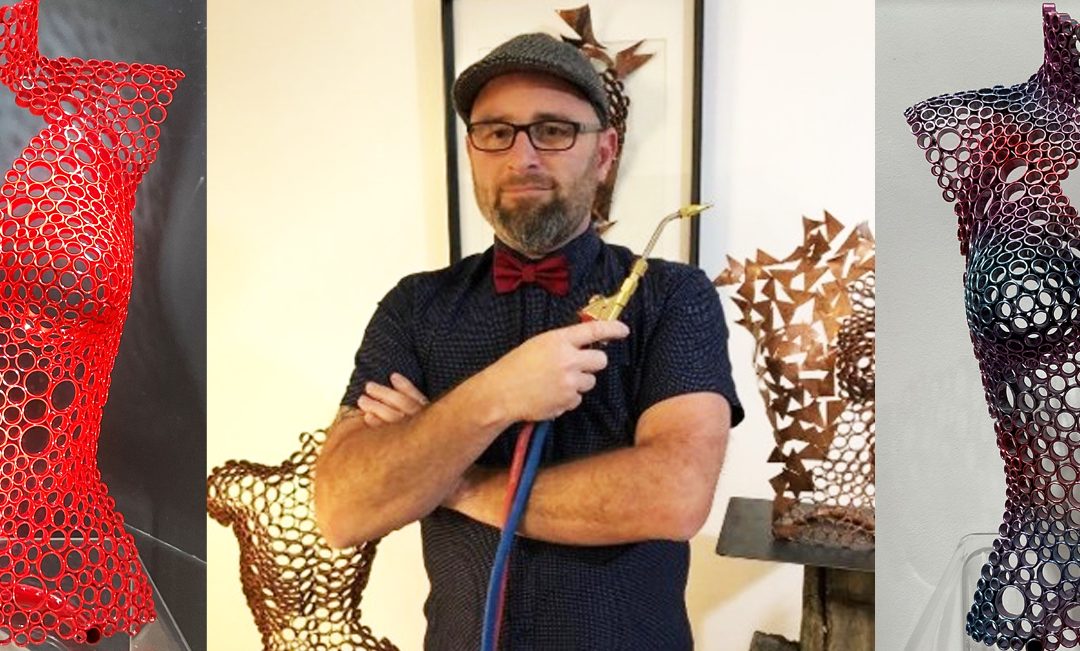
Nov 18, 2023
Yohan Plu is a French sculptor, who is part of the current trendy art universe. Plu is today the only artist to create female busts in copper rings, which makes him a true pioneer. Cut one by one by hand, he selects, assembles and welds each washer – of different diameters – to give birth to female bodies. This unique characteristic allows him to put his touch and his personality in the immense world of sculpture. The female bodies he creates seem sculpted in lace like pieces of haute couture.
He specializes in working with copper, which he particularly likes for its lightness and malleability. Drawing on his experience, he carefully develops, out of sight, his own recognizable style. The quality of his work and his originality make Yohan Plu an outstanding artist. He signs his works: P-elle-U.
Yohan Plu is an artist from Vendée, who is part of the current trendy world of art. A passionate and self-taught sculptor, he is today a popular contemporary artist. He specializes in working with copper, which he particularly likes for its lightness and malleability. Drawing on his experience, he carefully develops his own recognizable style, hidden from view. A true precursor, he is currently the only artist to create female busts in copper rounds. Cutting one by one by hand, he selects, assembles and welds each washer of different diameters, to give birth to female bodies.
He specializes in working with copper, which he particularly likes for its lightness and malleability. Drawing on his experience, he carefully develops, out of sight, his own recognizable style. The quality of his work and his originality make Yohan Plu an outstanding artist. He signs his works: P-elle-U.
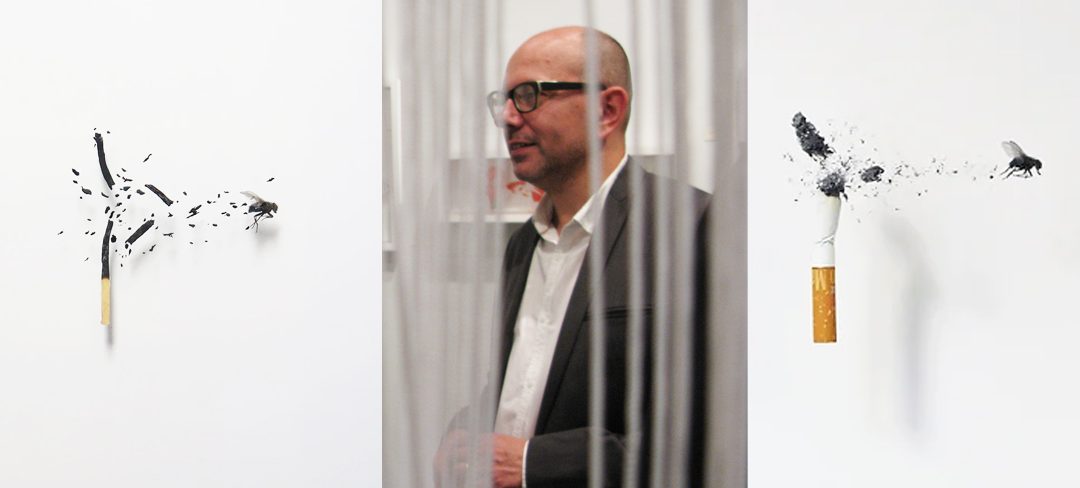
Jul 1, 2023
After a childhood in the south of France, Jean-Luc Maniouloux moved in Paris for studies in advertising and graphic design.
His aneries often take him to the galleries of the Natural History Museum, in the cabinets of curiosities of the capital and other taxidermist developing a taste for the animal world, insects in particular. He makes a career in advertising and illustration for major publishers then turned to design and the plastic arts where his atypical and endearing work quickly attracts the attention of many international collectors.
His works include now on the walls of individuals on five continents ! With poetry tinged with humor and an implacable and often minimalist.
Unlike the triumphal, imposing and silent march of the great gallery of the evolution of the Parisian Museum, the animal universe of the artist is on scale reduced, consisting of ants, butterflies or bumblebees. Less majestic their progress is none the less without consequences. Thus, our manufactured universe, strong and protective is undermined by the impact of a tiny fauna and determined to live her life despite the constraints that surround her.
These are ephemeral and poetic moments where time seems suspended so shattered by an electric light bulb as a bumblebee passes by.
-In your works, Jean-Luc, we can say that the exhortation of the poet Lamartine “ O time, suspend your flight ! ” Particularly applies.
– Absolutely ; most of my creations are like a snapshot, a 3D photo made nevertheless in quite traditional materials.
The action is frozen in pain action, time is suspended.
– We were talking about Lamartine; more distressing is the question of the philosopher Alain:
” How long will the weather suspend its flight ? ”
– There, I trust the new generations of glues.
Jean-Luc Maniouloux currently lives and works in the heart of Paris in a charming little workshop surrounded by a garden where butterflies and bees live, but, promise ! no one disturbs the other !
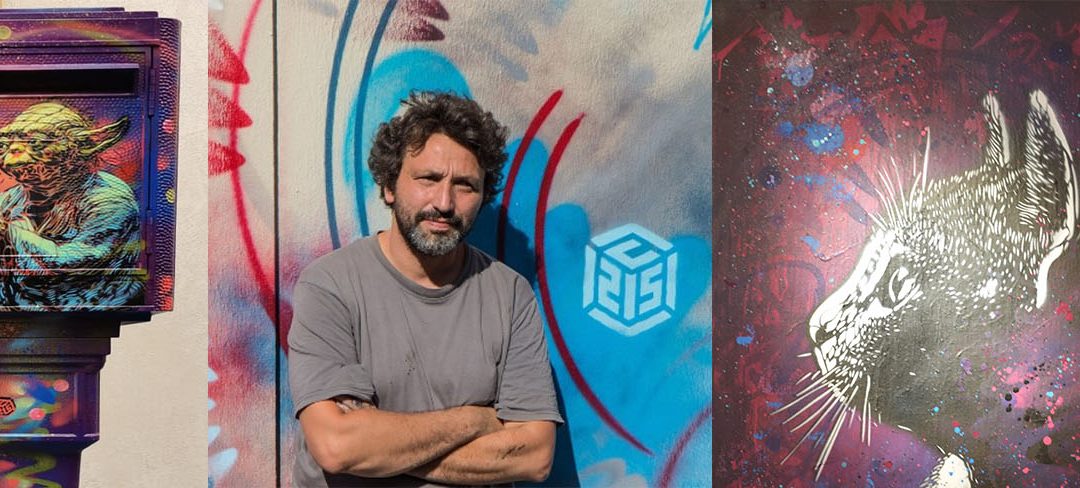
Jun 25, 2023
C215
Christian Guémy alias C215 is a major French artist on the street art scene.
Forty years old, he lives in Vitry-sur-Seine where he has his workshops. He mainly works with stencil with a very recognizable style. Apart from his interventions in the streets of the whole world, he presents works painted on recycled objects in many galleries, in France and abroad.
Christian Guémy started stenciling in 2006. He participated in the MUR in 2007 and in 2013 produced a 25-meter painted wall in Paris, metro Nationale, representing a cat.
In 2013, he also painted the face of the Minister of Justice, Christiane Taubira, then the target of racist attacks. Known internationally, Christian Guémy presents works painted on recycled objects in many galleries, in France and around the world.
In 2014 he was asked to create 20 illustrations for the game Far Cry 4 by Ubisoft.
In 2016, C215 “signed” a stamp for the Post Office which honored Léo Ferré. The author, composer and performer would have celebrated his hundredth birthday.
His favorite subjects are childhood, the left behind, the anonymous, lovers, but also animals (dogs, cats and birds), which are particularly present in his urban paintings. His main role model is his daughter Nina, born in 2003.
His style ranges from duotones to the most colorful compositions. The dimensions of his works remain on a human scale, only rarely creating very large painted walls.
A fervent admirer of Caravage, C215 wants to put poetry and emotion in the heart of disembodied cities. His anonymous faces with expressive features testify to his need to rediscover a certain humanity.
“My works place the invisible among celebrities. Through these faces, I want passers-by to confront their own humanity.”
“The art of C215 is to capture light, depth and humanity. It is very difficult to achieve with stencil – his favorite medium – and rarely successful. This technique tends to flatten the images and make them static.
On the contrary, C215 has developed a style of illustration and cutting that reveals the deep personality of his subjects, bringing them an impressionistic light.
Although his technique is meticulous, in the finest sense of the word, C215’s art transcends pure form and seems to touch the very essence of the human soul. It is always a great pleasure for me to come across the works of C215 in the street.”
Shepard Fairey aka OBEY
From July 10 to October 8, 2018, urban artist C215 gives faces to the great figures honored at the Pantheon with the “Illustrious! C215 around the Pantheon”.
Follow a route in the crypt of the Pantheon then in the streets of the 5th arrondissement! You will go behind the scenes of the creation of C215 before leaving the monument to discover the portraits of 28 personalities.
Page 1 of 812345...»Last »







